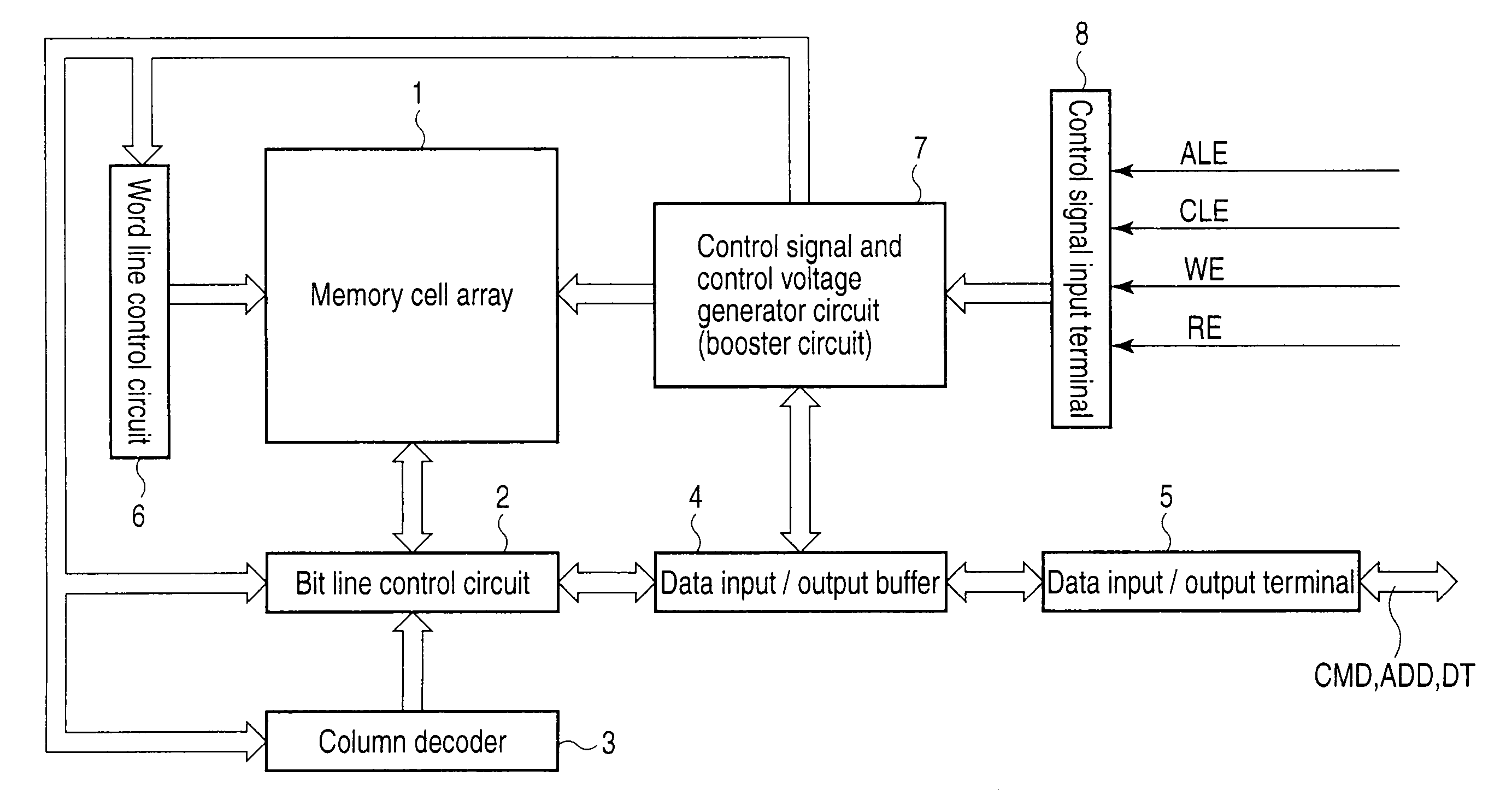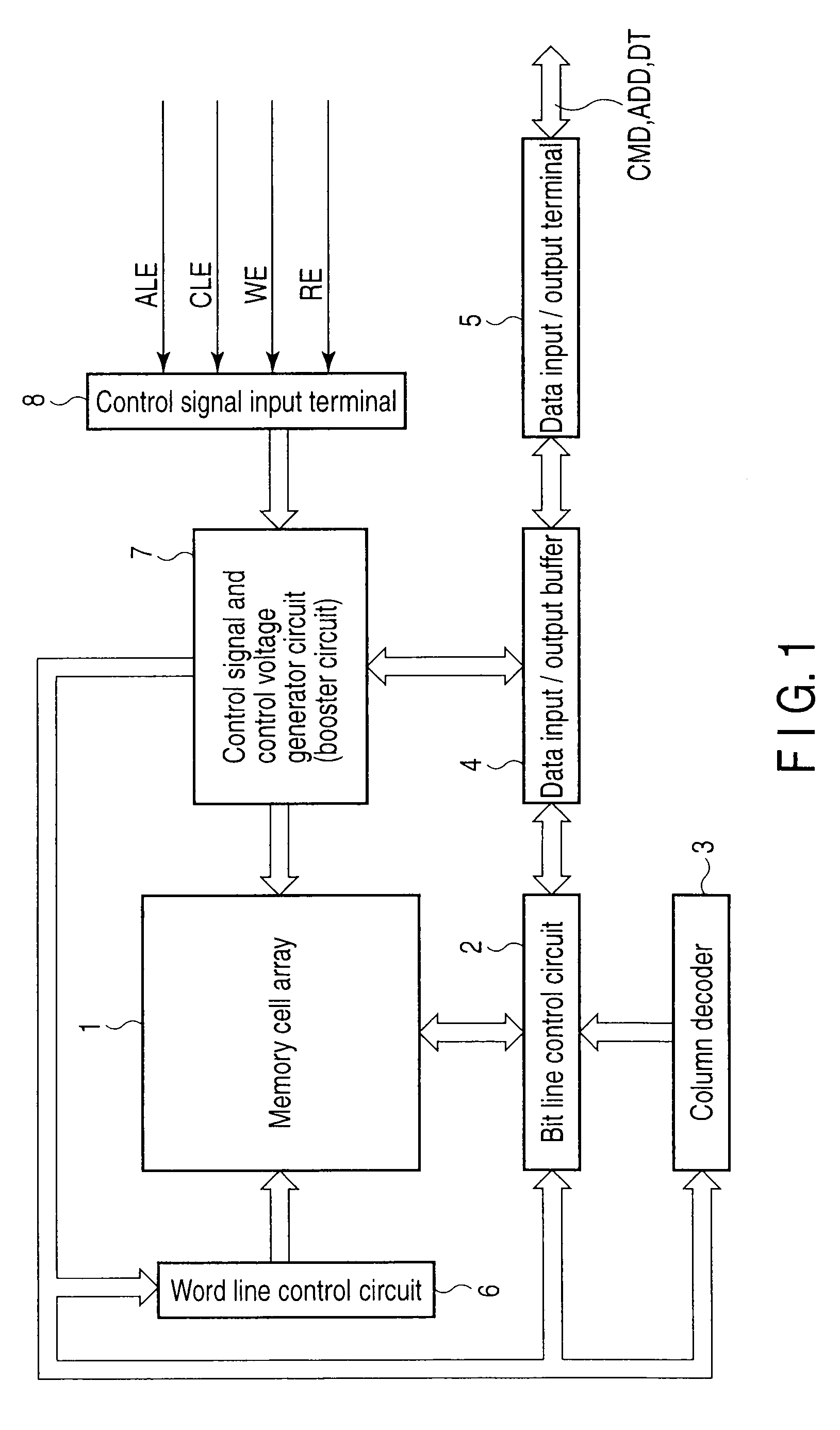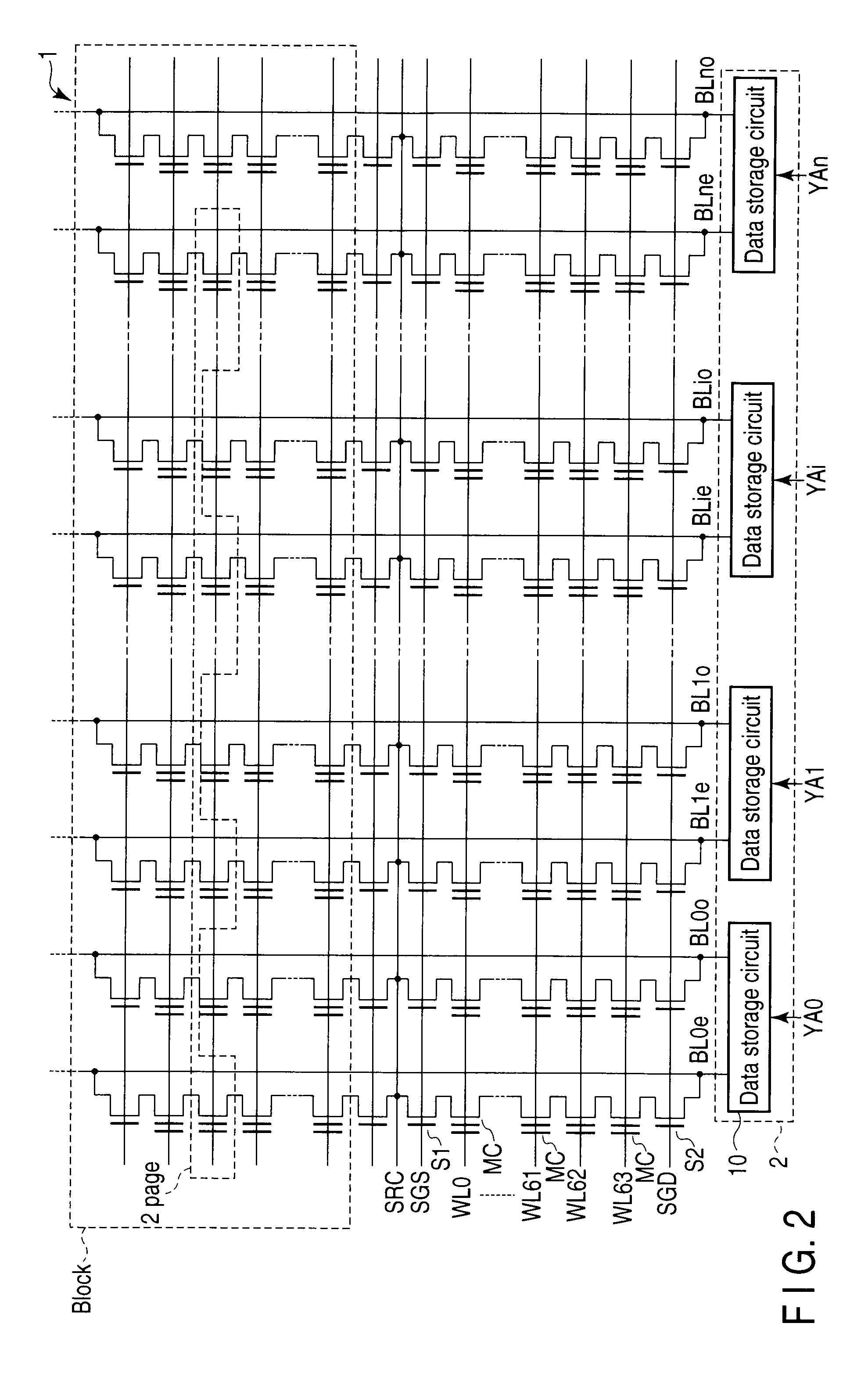Semiconductor memory device and semiconductor memory system storing multilevel data
a semiconductor memory and memory device technology, applied in static storage, digital storage, instruments, etc., can solve the problems of reducing the writing performance and not greatly different time required to write data in the 2-level block
- Summary
- Abstract
- Description
- Claims
- Application Information
AI Technical Summary
Benefits of technology
Problems solved by technology
Method used
Image
Examples
first embodiment
[0054]FIG. 1 shows a NAND flash memory as a semiconductor memory device that stores 2 levels (one bit) or 4 levels (2 bits) in a memory cell.
[0055]A memory cell array 1 includes a plurality of bit lines, a plurality of word lines, and a common source line, and memory cells in which data can be electrically rewritten and which are made up of, for example, EEPROM cells are arranged in a matrix. A bit line control circuit 2 for controlling bit lines and a word line control circuit 6 are connected to the memory cell array 1.
[0056]The bit line control circuit 2 reads the data in a memory cell of the memory cell array 1 via a bit line, detects the state of a memory cell of the memory cell array 1 via a bit line, or writes data into a memory cell of the memory cell array 1 by applying a write control voltage to the memory cell via a bit line. A column decoder 3 and a data input / output buffer 4 are connected to the bit line control circuit 2. A data storage circuit in the bit line control c...
second embodiment
[0174]FIG. 21 shows a write sequence according to a second embodiment. In the first embodiment, reading and restoration of 4-level data are executed after writing in the block SLB in an adjacent cell. On the other hand, in the second embodiment, reading and restoration of 4-level data are carried out before rough writing of 4-level data with respect to an adjacent cell. Since reading 4-level data is effected before writing in an adjacent cell, the 4-level data is not affected by capacitance coupling due to writing in the adjacent cell. Therefore, a threshold distribution is shifted as shown in FIG. 13 (3) to widen a read margin. However, in this case, read 2-level data must be held. Accordingly, in the data control unit 10b shown in FIG. 8, two more data latch circuits must be additionally provided. That is, the data latch circuits are ADL, BDL, and XDL in the first embodiment, but circuits CDL and DDL are further required.
[0175]A flow of a (program) in this example is as follows.[0...
third embodiment
[0184]FIGS. 22 and 23 show a third embodiment. In the first and second embodiments, 4-level data is roughly written in a memory cell of the block MLB, and then 2-level data is written in a memory cell of the block SLB. On the other hand, a third embodiment is characterized in that 2-level data is first written into a memory cell of the block SLB, and then 4-level data is roughly written in a memory cell of the block MLB. In the third embodiment, a write operation is the same as those in the first and second embodiments, thereby omitting a description thereof.
[0185]The third embodiment can also obtain the same effect as those in the first and second embodiments.
[0186]FIG. 24 shows a modification of the third embodiment. When generating data obtained by subjecting data corresponding to two pages to exclusive NOR in a controller, the controller first supplies an address of the block SLB and data of exclusive NOR to a NAND flash memory. Thereafter, writing in the block SLB is first carr...
PUM
 Login to View More
Login to View More Abstract
Description
Claims
Application Information
 Login to View More
Login to View More - R&D
- Intellectual Property
- Life Sciences
- Materials
- Tech Scout
- Unparalleled Data Quality
- Higher Quality Content
- 60% Fewer Hallucinations
Browse by: Latest US Patents, China's latest patents, Technical Efficacy Thesaurus, Application Domain, Technology Topic, Popular Technical Reports.
© 2025 PatSnap. All rights reserved.Legal|Privacy policy|Modern Slavery Act Transparency Statement|Sitemap|About US| Contact US: help@patsnap.com



